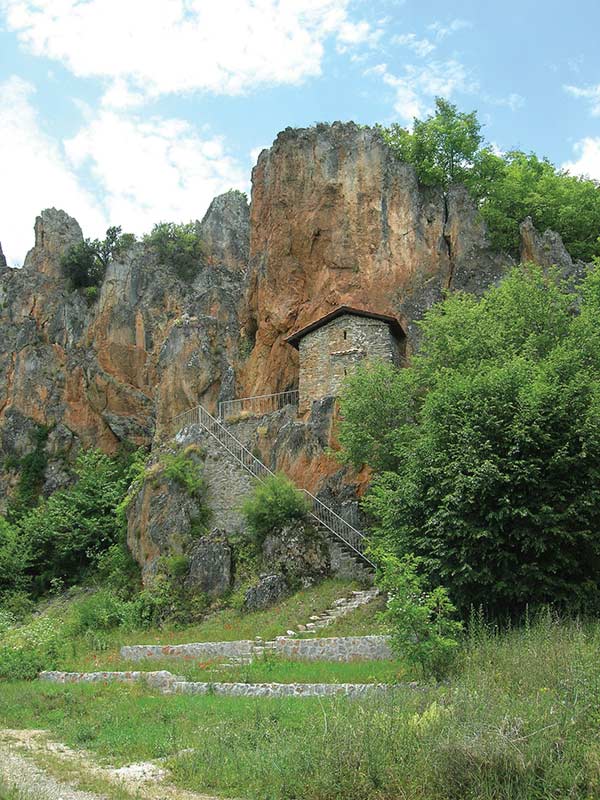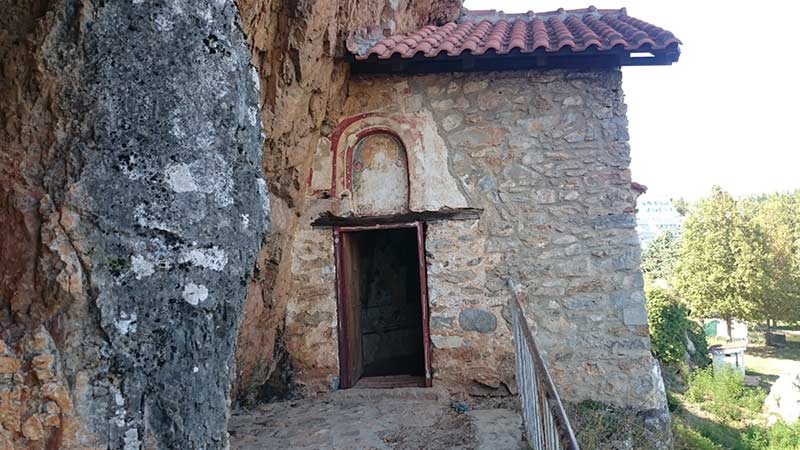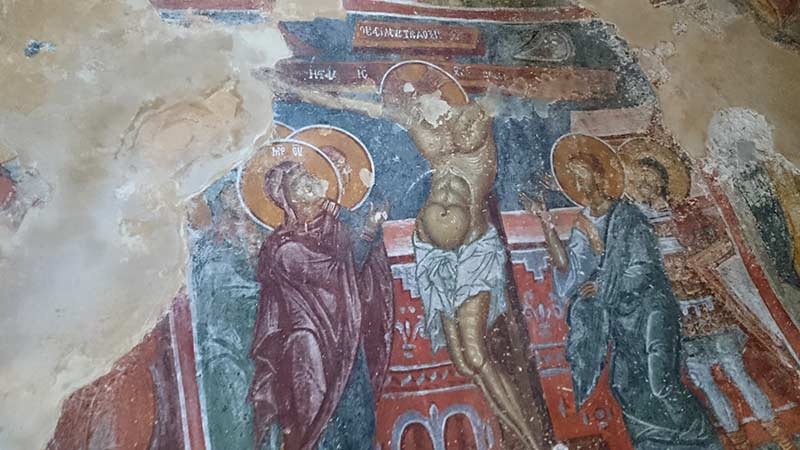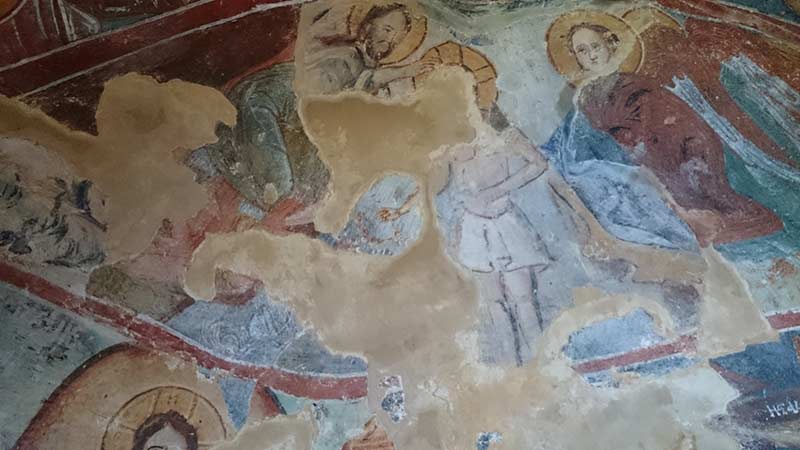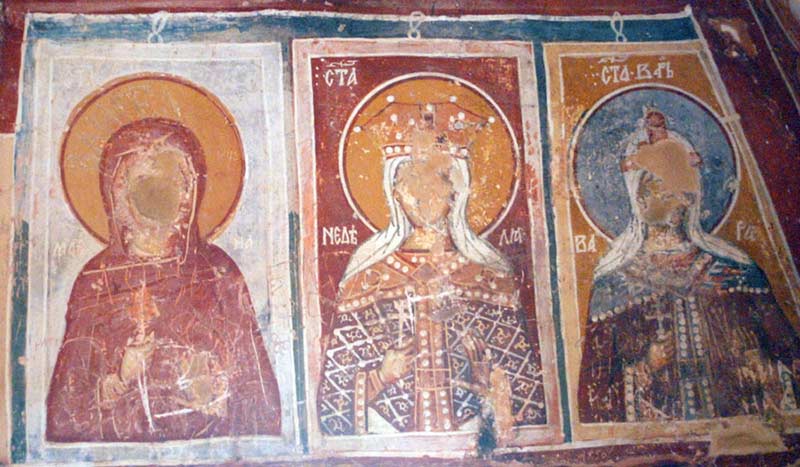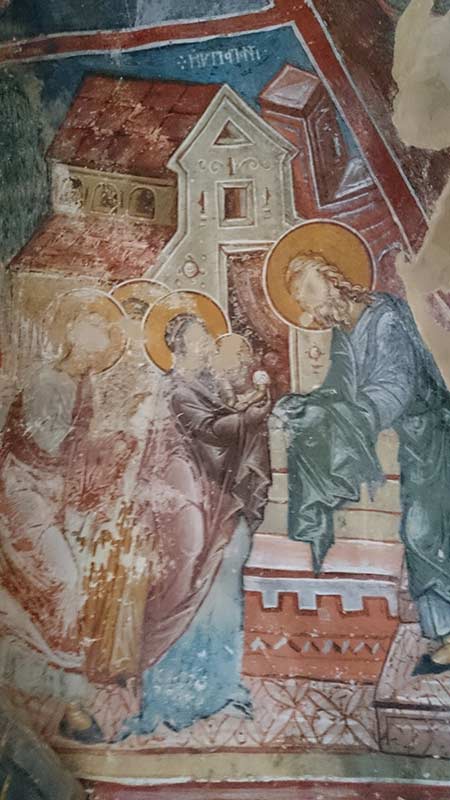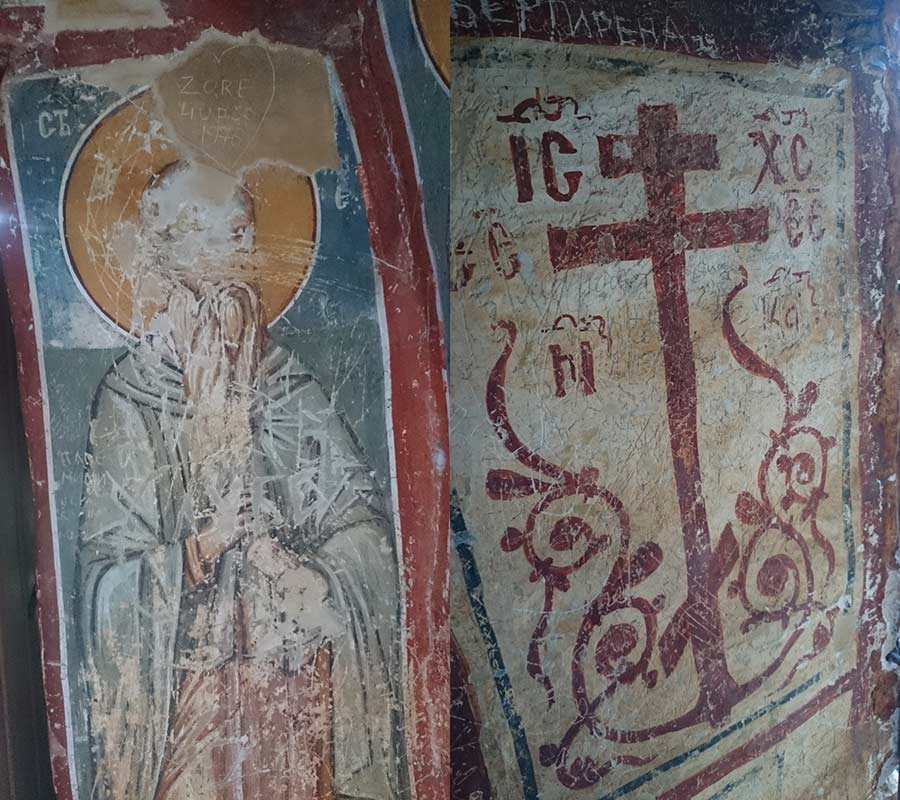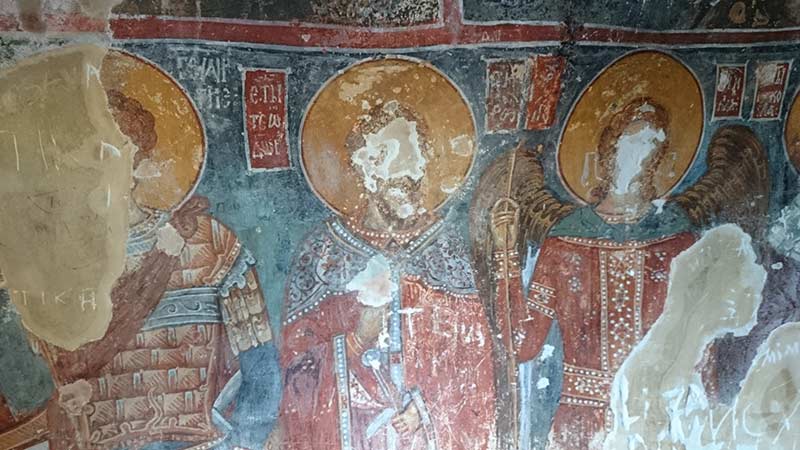In vicinity of the monastery of Kališta, ingrown into the rocks is the small cave church dedicated to St. Athanasius, the archbishop of Alexandria.It was erected with the efforts and the labor of the monks from the nearby monastery.
The shallow hole of the cavern was used for the structure of the church, and walls were erected on the east side with a three sided apse, which was roofed by stone slabs. A stair case of stone steps lead towards the temple.
The church is home to the richest preserved medieval fresco ensemble in the region of Struga. The stylistic features of these frescoes show a skilled painter from the 1370’s, who was well educated in theology as well. In the 19th century a part of the fresco ensemble was painted over.
In the apse is portrayed the Holy Virgin Orans, and below is the scene of the Sacrificed Christ. On the small wall portions of the nave the selection of the saint figures was achieved with great skill. Next to the iconostasis on the south side are depicted St.Clement, the patron of Ohrid, followed by the hermit monks Ephtimius and Anthonius, the holy healers Cosma and Damianos, the warriors Demetrius, George, and Theodore Tyro, Archangel Michael and St.Nicholas the miracle worker.
The Deesis is depicted on the north side of the iconostasis. From the cycle of the Great Feasts are depicted the Nativity, the Presentation in the Temple, the Crucifixion, and the Myrophores at the Empty Tomb of Christ, while on the west section is the Dormition of the Holy Virgin.
The remaining scenes, the Annunciation and the Ascension, which belong to this cycle, are in their usual place, in the sanctuary. The patron of the temple St. Athanasius is portrayed above the south door. Most probably during the 17th century the paintings in the sanctuary were enriched with images of several prelates. Above the south door in rectangular frames are rendered busts of the holy women Petka, Marina, Nedela and Barbara.
In the church among the features of the oldest painting a trace of eclecticism is revealed. On the folds of the garments and especially on the backdrop the painter used light and pure color. The images have vivid expressions and the draperies fall freely. The painter has a sense for color contrast. Some of the images resemble to the older frescoes in Transfiguration monastery in the village of Zrze, near Prilep, and some features are reminiscent to the frescoes in the church of the Holy Virgin of Zaum near Ohrid dating from 1361.
St.Athanasius cave church gallery

Virtual Macedonia
Republic of Macedonia Home Page
Here at Virtual Macedonia, we love everything about our country, Republic of Macedonia. We focus on topics relating to travel to Macedonia, Macedonian history, Macedonian Language, Macedonian Culture. Our goal is to help people learn more about the "Jewel of the Balkans- Macedonia" - See more at our About Us page.
Leave a comment || Signup for email || Facebook |
History || Culture || Travel || Politics

